On Wednesday, November 9, 47.7 percent of the voting populace woke up with the worst hangover in history; 47.5 percent of the voting populace woke up ready to troll some Clinton supporters, roll back environmental regulations, and make America white again; and 43.2 of the eligible voting population realized that, hey, they probably should actually vote.
But as activists on the frontlines and people of color have long been aware, big changes in this country have been a long time coming, and they're sure to shape the days to come.
Consider these five classic books of the Southwest a primer for the revolution.
![]() 1. 'The Monkey Wrench Gang' by Ed Abbey
1. 'The Monkey Wrench Gang' by Ed Abbey
Anyone who falls in love with the wild and scenic places of the Southwest will eventually fall in love with this book, for such places are always under assault, and Abbey's fantasy—about a band of rag tag misfits who fight back against the unchecked forces of capitalism—is good, rabble-rousing fun. And who can forget the character of George Heyduke, the recently returned Green Beret hell-bent on using his sick reconnaissance skills and propensity for explosives to protect the land and its critters? Hell, this book gave us the term monkey wrench—which, you'll have to admit, is a whole lot catcher than saboteur (which is way too classy for what is ultimately good old-fashioned redneck fun, in defense of Planet Earth). And yes, Abbey was sexist—the novel's sole female figure is a fetching bimbo prone to hero worship—but the importance of this book cannot be denied, and in the time of Standing Rock and direct action protests everywhere, extreme tactics begin to look a lot less extreme.
Famous First Words: "Dr. Sarvis with his bald mottled dome and savage visage, grim and noble like Sibelius, was out night-riding on a routine neighborhood beatification project, burning billboards along the highway—U.S. 66, later to be devoured by the superstate's interstate autobahn."
![]() 2. 'The Milagro Beanfield War' by John Nichols
2. 'The Milagro Beanfield War' by John Nichols
Mexico and El Norte are far more closely connected than many Americans are willing to admit, and the Hispanic culture of the Southwest—which was, you know, once known as Mexico—are the case in point. When New Mexican sheepherder Cleofes Apodaca heard his long-lost dog, Pendejo, barking from somewhere down below the surface of the earth in a field of alfalfa, he started digging, and, as legend has it, did not stop until he discovered, first, the treasure of the Seven Cities of Cibola (which so eluded Coronado), and then a holy spring (for all springs are holy in the desert). The spring washed away all of the artifacts, as well as the sheepherder and his dog, and in time became the source of water for the deeply rooted Hispanic farming community of Milagro. Now, decades hence, white-man developers from Albuquerque want to condo-ize the place, kicking out the locals—phase one of which is to deny young farmers the water on which their parents' crops depended. One day Joe Mondragón decides he's had enough, so he taps the main irrigation ditch and grows himself some beans. The poor farmers and sheepmen of the community, possessed of both common sense and a sense of humor—not to mention the mojo of many saints—rally around him, and in the end, the little guys win. The original Wild West Water War.
Famous First Words: "Many people in the Miracle Valley had theories about why Joe Mondragón did it."
![]() 3. 'Animal Dreams' by Barbara Kingsolver
3. 'Animal Dreams' by Barbara Kingsolver
Codi and her sister Hallie grew up in Grace, a little town in southern Arizona, which neither of them ever thought they'd return to—but now Hallie's headed south to Nicaragua to see if she can help the farmers there, who are struggling to grow food amid rising political unrest, and Codi, after discovering she doesn't have the guts to be a doctor, has been offered a job teaching high school science in their hometown. This book possesses the psychological richness that made Barbara Kingsolver a bestseller many times over, and it's astounding to see what force her sophormore offering, published in 1990, still posesses—and though the characterization is so strong you hardly even notice it, this is as much an environmental novel as anything she's ever written. This book reminds us that what goes on south of the border still happens in "America," and the US is often implicit in world politics in ways we'd rather not be aware of. It's also a clarion call to action: morality, according to Hallie, is not a quality some people possess and others don't—it's something you do, a verb.
Famous First Words: "His two girls are curled together like animals whose habit is to sleep underground, in the smallest space possible."
![]() 4. 'Ceremony' by Leslie Marmon Silko
4. 'Ceremony' by Leslie Marmon Silko
What does it take to recover from a significant trauma—ancestral trauma, personal trauma, cultural trauma? Renowned Native American author Leslie Marmon Silko dug deep into the cultural matrix of the Southwest's indigenous Pueblo peoples and returned with some hard truths about what it takes to heal, mend, and make whole. Ceremony tells the story of Tayo, an army veteran who returns to the rez after WWII, his head messed up from his experience as a Japanese POW. Both white and Native, a skeptic and a believer, Tayo must find his own path, back into the wisdom traditions he has discounted, and forward into a new life, free from the ghosts that haunt him.
Famous First Words: "What She Said: The only cure / I know / is a good ceremony, / that's what she said."
![]() 5. 'Oh Pure and Radiant Heart' by Lydia Millet
5. 'Oh Pure and Radiant Heart' by Lydia Millet
Lydia Millet is not yet a household name—though, as Lisa Zeidner recently pointed out, Millet's latest novel, Sweet Lamb of Heaven, should change that. But before you delve into that book, a metaphysical thriller that seems so eerily to have predicted the rise of President-Elect Voldemort that it will raise the hair on your arms, may I suggest you pick up a copy of Oh Pure and Radiant Heart? The old Nuclear Football, soon to be within the reach of Lord Tinyhands, was born in the heart of the Southwest, at Los Alamos, and tested in the nuke-blasted badlands of Nevada—and while we don't hear much about it these days, the threat of nuclear annihilation looms as large (if not larger) than ever. In Oh Pure and Radiant Heart, the architects of the A-bomb—Robert Opppenheimer, Leo Szilard, and Enrico Fermi—appear mysteriously in Sante Fe, back from the great beyond, and, upon learning what evil ends their work has been put to, embark on a global disarmament campaign. Along the way, they pick up a ragtag band of groupies, peaceniks, New Agers, and activists, and in their largely ineffectual efforts to avert Mutually Assured Destruction is a hilariously accurate and none-too-flattering portrait of the left. If our salvation depends upon these folks, we may just be doomed.
(Not So) Famous First Words: "In the middle of the twentieth century, three men were charged with the task of removing the tension between minute and vast things."
What are your favorite literary calls to revolution, Southwestern or otherwise?
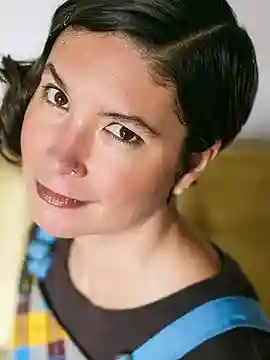
About the author
An author, editor, and educator, Susan DeFreitas’s creative work has appeared in the Writer’s Chronicle, Story Magazine, the Huffington Post, Daily Science Fiction, and Southwestern American Literature, along with many other journals and anthologies. She is the author of the novel Hot Season, which won a Gold IPPY Award for Best Fiction of the Mountain West, and holds an MFA from Pacific University. She divides her time between Santa Fe, New Mexico, and Portland, Oregon, and has served as a freelance editor and book coach since 2010.
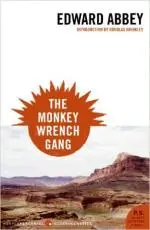 1. 'The Monkey Wrench Gang' by Ed Abbey
1. 'The Monkey Wrench Gang' by Ed Abbey
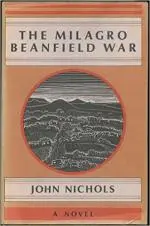 2. 'The Milagro Beanfield War' by John Nichols
2. 'The Milagro Beanfield War' by John Nichols
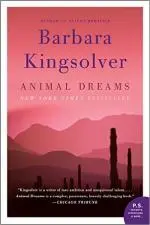 3. 'Animal Dreams' by Barbara Kingsolver
3. 'Animal Dreams' by Barbara Kingsolver
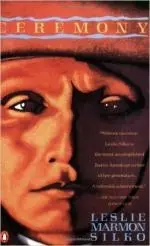 4. 'Ceremony' by Leslie Marmon Silko
4. 'Ceremony' by Leslie Marmon Silko
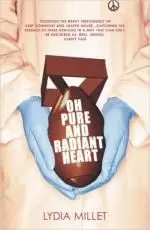 5. 'Oh Pure and Radiant Heart' by Lydia Millet
5. 'Oh Pure and Radiant Heart' by Lydia Millet







